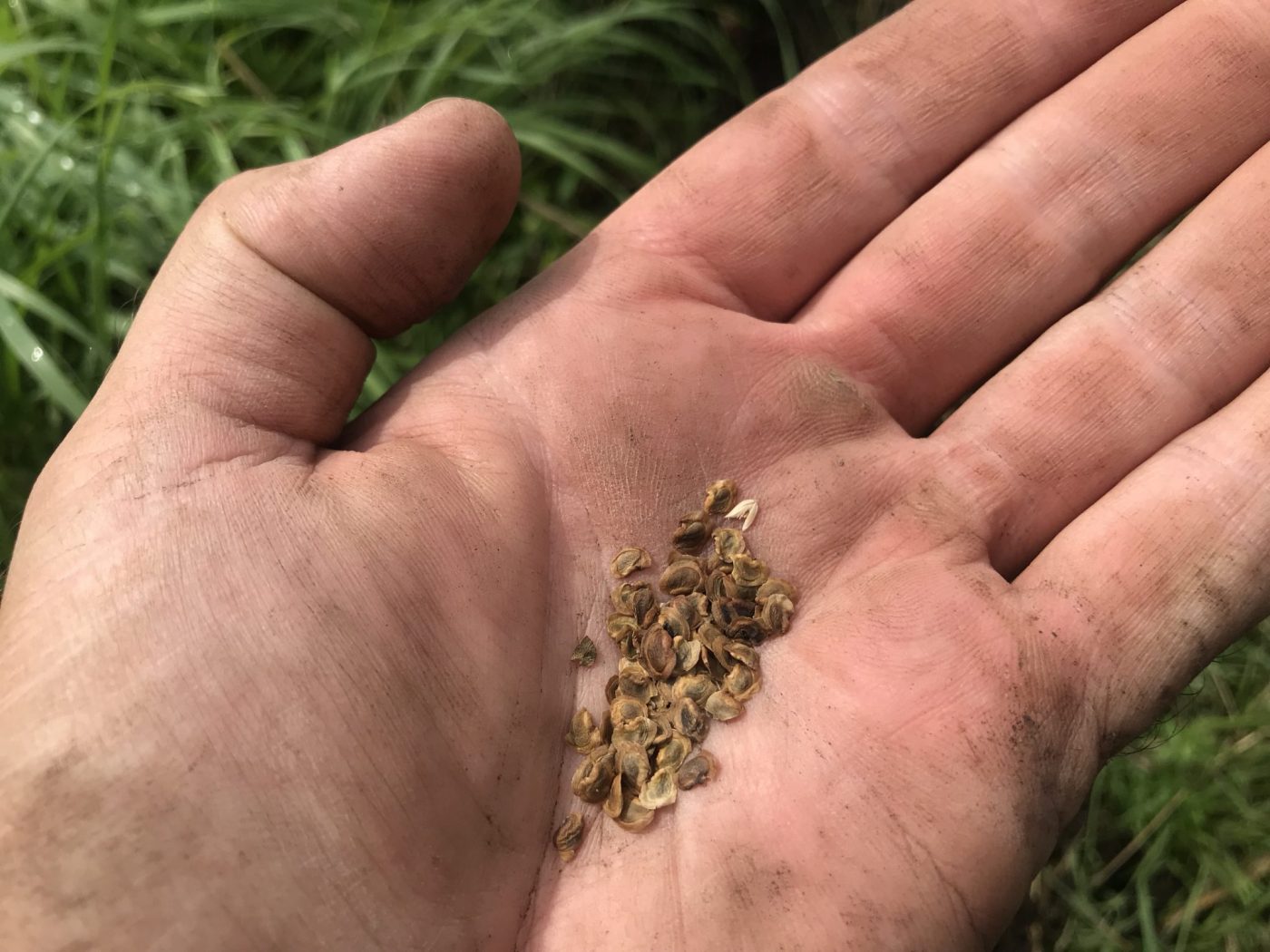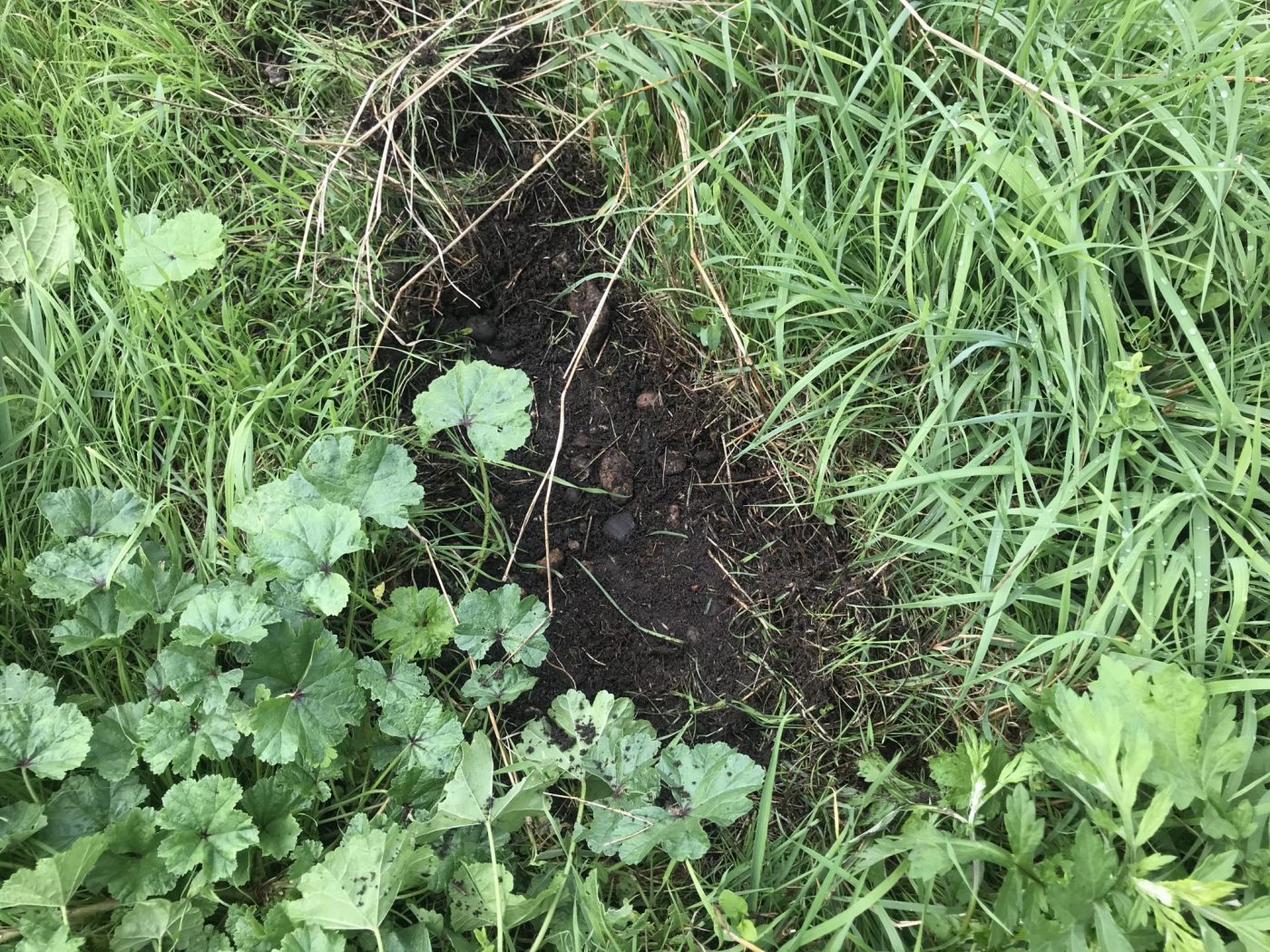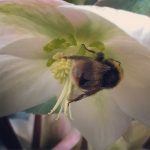Many meadows have one problem: overly vigorous grasses. If soil is even a little too rich or too moist, grasses enjoy the conditions too much, growing vigorously and outcompeting the flowers. Grass is essential to a meadow but you want the balance. Sowing Rhinanthus minor, aka yellow rattle, in late-summer or autumn will help.

Rhinanthus minor is a little yellow wild flower that is hemiparasitic. While it can grow by itself, its roots will grow into those of other plants, especially grasses, drawing nutrients from them. This slows the grasses down, keeping them shorter and slowing their spread, giving other plants a chance to thrive.
It only really works if grass isn’t too vigorous already because the shade of very strong grass will stop sunlight getting to the Rhinanthus minor. I suspect the grass on my allotment will fall into this category but I’m giving it a try in my mini meadow.
To do this, sow around now because the seeds need the winter cold to tell them it’s time to germinate when the weather warms in spring. I sowed mine today (end of August) but anytime between late-August and December is fine.
Before sowing, cut the meadow down low and then scarify the area, which is scratching away at the grass to reveal bare soil. This allows the seed to make contact with the soil and to grow. As my mini meadow is tiny, at only 3m x 3m I concentrated on scratching out a number of patches dotted around the area.

I then scattered the seed around and trod them in to aid soil contact. There is no need to cover or water them in. Between now and spring I’ll keep the meadow grass cut short to about 5cm, removing all of the clippings to ensure I don’t add to the nutrients.
Whether this will be successful for me on the fairly nutrient rich soil of my allotment remains to be seen but it will be interesting to see the results next year. If they do grow, I then won’t cut the meadow between March and July giving Rhinanthus minor a chance to flower and set seed for the following year, increasing the population.
Now, if only it would keep the allotment’s couch grass epidemic under control…




How did it work? I just found yellow rattle in a meadow yesterday, learned what it was, and thought I’d go back later for the seed for my own weed yard. To date my grass oppression plan has mostly been to go around pulling the seed heads off all the grasses I don’t consider interesting but that’s a little labor-intensive.